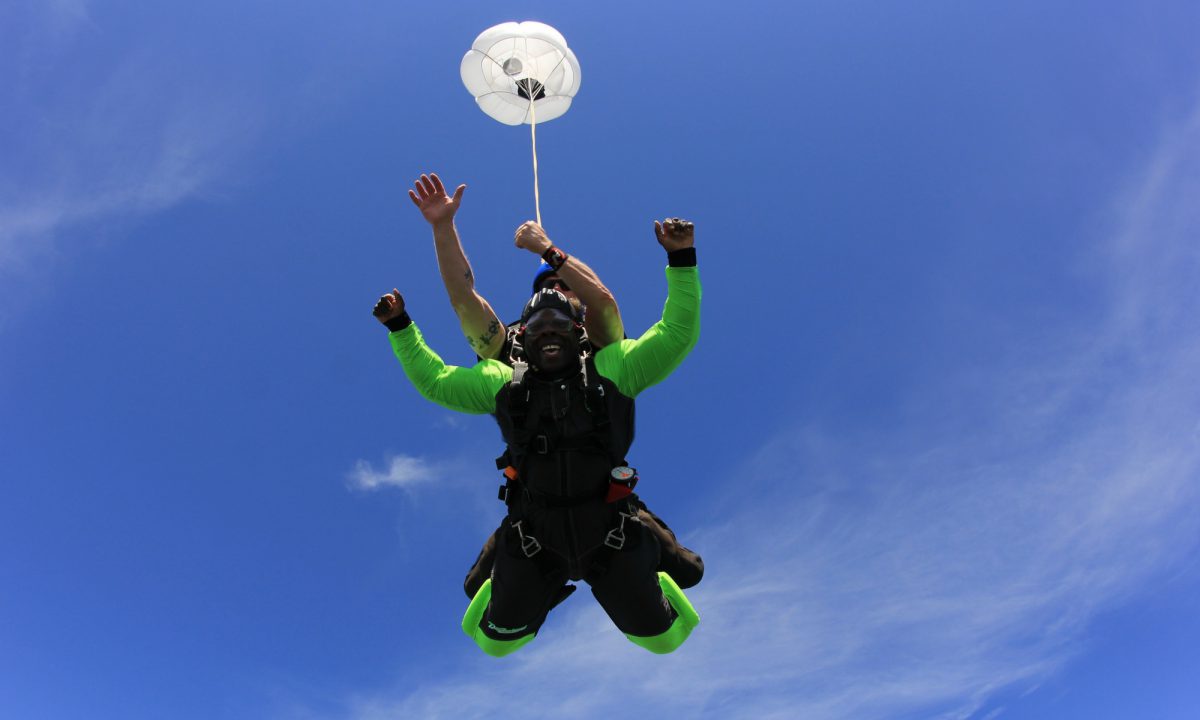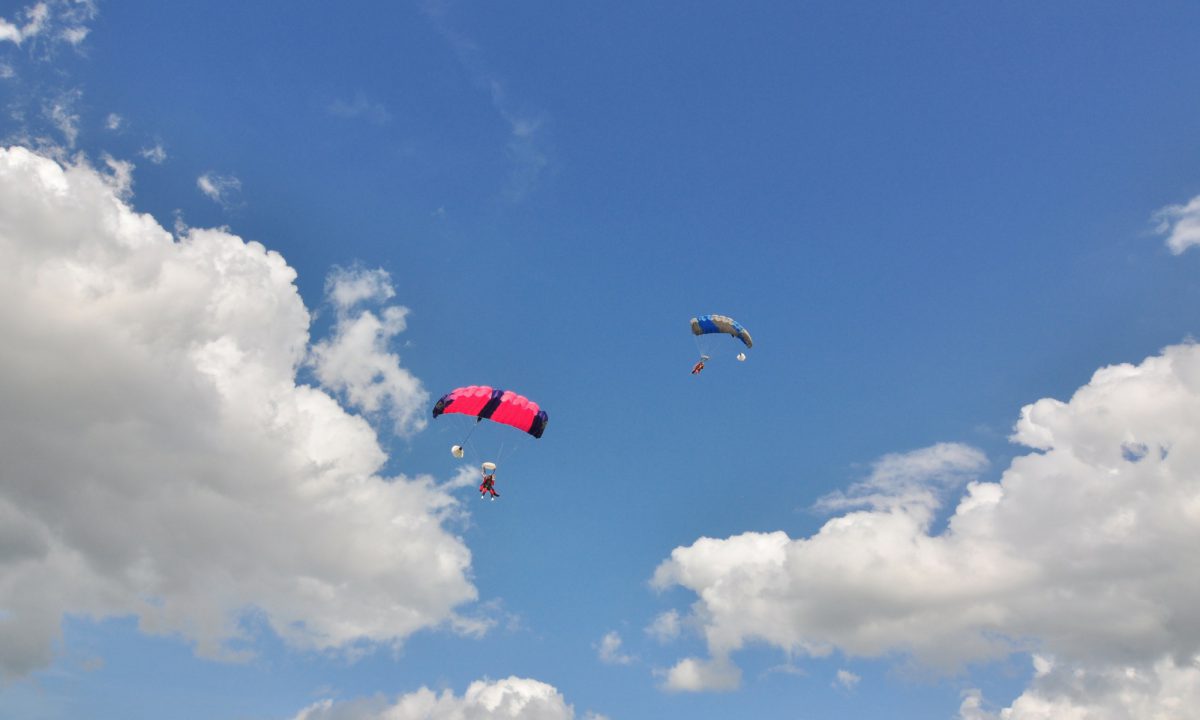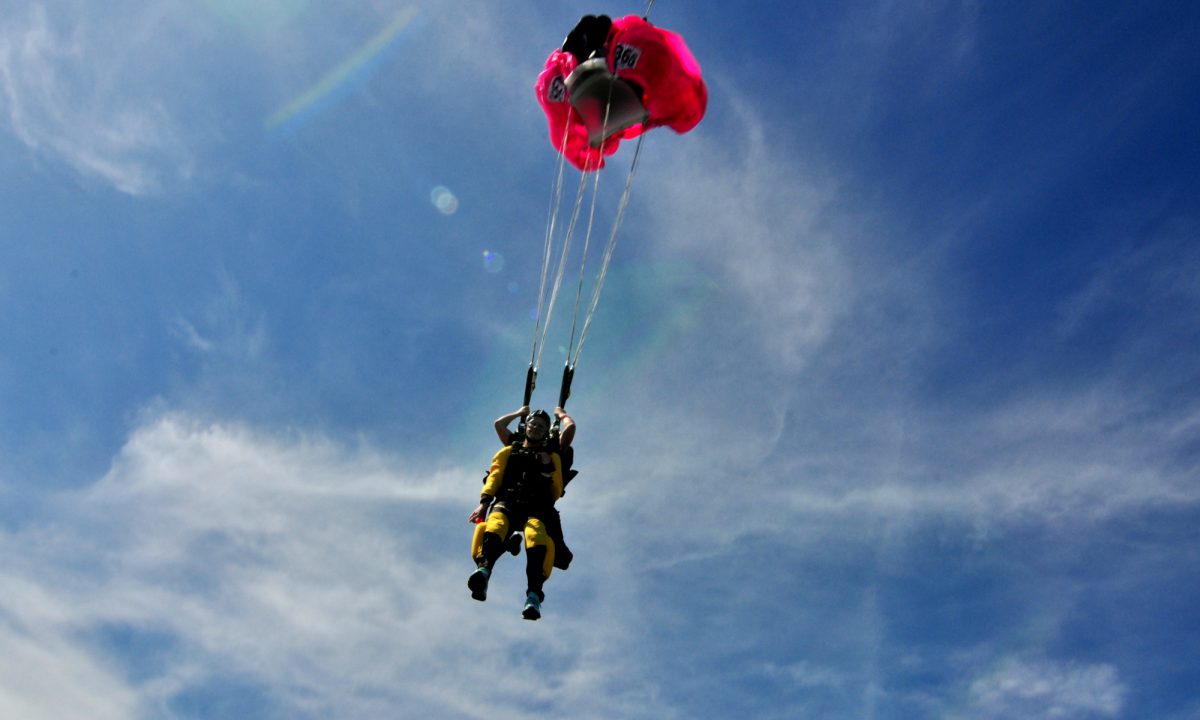
All photos courtesy of Xtreme Media Services.
It’s a conflict that exists at nearly every DZ between “US” and “THEM” also known as instructors and management.
The upshot of the conflict is this:
Tandem instructors need to make money; if there are too many instructors in the rotation, the less money each instructor makes.
Management prefers to have a few extra instructors to increase efficiency, reduce wait times and not be in a pinch should someone be injured or not turn up for work.
In this blog, we examine the fine line of staffing (which is harder to come by these days) and challenge DZ operators to be more efficient to prevent the need for more staff.
HOW MUCH STAFF SHOULD A DZ HAVE?
Answer this question:
How much time are your guests spending at the DZ between check-in and landing?
In my opinion, the magic number is three hours.
To be clear, not three hours until boarding; three hours until landing. Between checking-in, completing paperwork, training, using the restroom, purchasing a drink, waiting to meet with an instructor, getting geared up, riding to altitude and landing shouldn’t take longer than three hours. If it takes more, then it’s taking too long and you’re under-staffed (or operating inefficiently).

Under three hours (while great for your guests) and you’re probably over-staffed (unless you’ve got a high volume of guests to keep staff happy).
If it’s taking longer than three hours for your guests to complete the experience, the next step is not to immediately hire more staff, but to evaluate your efficiency.
ARE YOU MANAGING THE DZ EFFICIENTLY?
BE A TIMEKEEPER
As a former DZM, I viewed my role on operational days as the official ‘timekeeper.’ It was my job to know the status of every reservation time throughout the day. To monitor this, I would have the admin staff record the arrival time of each group on their waivers; from that recording, I would keep tabs on each group’s wait times.

On a busy day, it’s easy for staff to have a skewed awareness of time because they experience very little downtime; they’re always in continuous motion. This is especially true for instructors who get into a rhythm of dropping gear after a jump and immediately being on a 20 (or sometimes a 15-minute call). To them, everything is flowing perfectly when in reality, guests could be in their fourth hour of waiting.
It’s important to troubleshoot for complications before they arise; this is essential to maintaining efficiency. To do this requires observing each department: manifest, packers, videographers, editors, registration, instructors, pilots, and weather.
WATCH FOR THE RIPPLE EFFECT
Small delays create an invisible ripple effect that compounds into longer delays. These seemingly harmless delays usually include the combination of:
- slow getting load 1 off the ground on time
- students arriving late
- improperly managing weather delays
- too many shutdowns
- not enough packers to meet demand
- overbooking the schedule based on instructor availability (causing shutdowns)
- poor coordination at check-in / registration
- not having someone ready and available to train
It’s amazing how efficient you become when you begin to calculate how many loads you need to fly up until sunset.

GET LOAD 1 OFF THE GROUND!
A common inefficiency observed at many DZs is the delay of getting load one up on time. The ripple effect of a delayed start sets a DZ back from the onset and that’s usually caused by one of the following players:
Pilots
More often than not, pilots are slow to have the aircraft pre-flighted and (my biggest pet peeve), fueled before load one goes on a call. Even worse is when the pilot arrives late. The delay of load one by 20 minutes will slowly erode into 30, 40, 50 and 60+ minutes as morning extends into the afternoon, increasing wait times every hour. Ideally, topping up with fuel at the end of each day removes a step at the start of the next day.
Guests
Guests who arrive late for any reservation time (but especially load 1) can royally screw up the day. Rather than hope they arrive on time, it’s a good practice to have the first group of the day arrive 15 minutes earlier than the reservation time to allow for a delayed arrival. Also, a courtesy call the night before to emphasize the need for an on-time arrival definitely helps with an on-time start.

Staff
Instructors arriving late cannot be tolerated. Being on time is part of being a professional and there’s nothing worse than being ready to go on a call, but not being able to as you wait for instructors to arrive.
Registration and Manifest
Before load one, the DZ is often most quiet and because of this, there is a lack of urgency to get things moving. I always feel that if registration (student check-in) and manifest operated with urgency at the beginning of the day as they would at the end of the day, then there’d be no need to rush at the end of the day. Getting load one on a call quickly is crucial.
If you wish for staff to be on time, it’s important to not keep them waiting due to inefficiency. There’s no better way to piss off staff than to demand they arrive on time only to keep them waiting around… eventually, they’ll start coming in late.
MANAGE WEATHER DELAYS EFFICIENTLY: OVERCOMMUNICATE
Weather delays were often my busiest days because it required going above and beyond with communication. The situation I want to prevent is having people arrive when we’re on a weather hold and to sit around for hours.
Weather delays serve as an opportunity to shine by showing how much you care about your guests. Going above and beyond to communicate is always appreciated.
 1. E-mail and Call
1. E-mail and Call
If we estimated a two-hour weather delay, then our procedure [manifest and I] was to divide and conquer between e-mailing and calling (on home and mobile phones) each guest and notifying them of a delay and requesting that they arrive two hours later than their original booking time. If the delay looked like it would be extended, we would follow-up with each customer, again via e-mail and phone (more easily done with Burble).
Throughout my travels, I see this scenario play out time after time where the DZ doesn’t seem to have a procedure to correctly manage the challenges of weather.
2. Onsite Updates
It’s important to give guests an update on the weather every hour… even if it’s obvious like a low-ceiling.
During weather delays, students are usually in an area to themselves in a separate group from experienced jumpers and can often feel forgotten. The goal here is to make sure your guests don’t feel forgotten and to prevent them from going to the office for a weather update (admin staff hate answering this question anyway).
3. Be proactive
Each hour, check-in with your students and show them the weather system on an iPad and explain what you hope will happen with your best guess for time; always give them the option to reschedule.
Bottom line: on weather days, you can’t overcommunicate.

ADJUSTING THE SCHEDULE
An important element of the time vs staff level conflict is the adjustment of the reservations schedule. Many DZ’s tend to ‘set it and forget it’; in other words, allowing for ten bookings per hour regardless of staff levels. DZ Managers should be editing availability every couple of days (unless you’re fully staffed all of the time) as your staffing situation changes.
QUOTE: “If your instructors are routinely having to drop gear in the landing area and meet their next students on a five-minute call, then you are under-staffed or operating inefficiently. This is where adjusting the schedule is critical.”
BALANCE
As an Owner or Manager, it’s important that you communicate with your staff the time expectations you have for your guests. While staff may agree or disagree, communication from management is vitally important as you navigate the challenges of staffing that satisfies both the customer and the instructor. It’s not an easy solution, but made much easier when everyone knows what you’re trying to accomplish.
Have a great 2018 season!
6 Comments
Comments are closed.







Excellent article James. I would add the fun jumper factor. Here organizers, like myself, can be helpful having their group at the boarding area at 5 minute call. Additionally they, and other staff, can be persistent reminding fun jumpers to be at the loading area. Holding up a plane, as you pointed out, has a ripple effect. Obviously good call announcement protocol is essential. Well done as always James.
Great points, Rick! Thank you!
Well thought thru. Would be interesting question to ask our guests before and after the Exp to what they think is reasonable time th
Great article!
Thank you, Max! Glad you enjoyed it! – JLB
Great article James, I hope all of our DZ owners and staffs can gain some insight on the everyday issues of our sport and businesses.